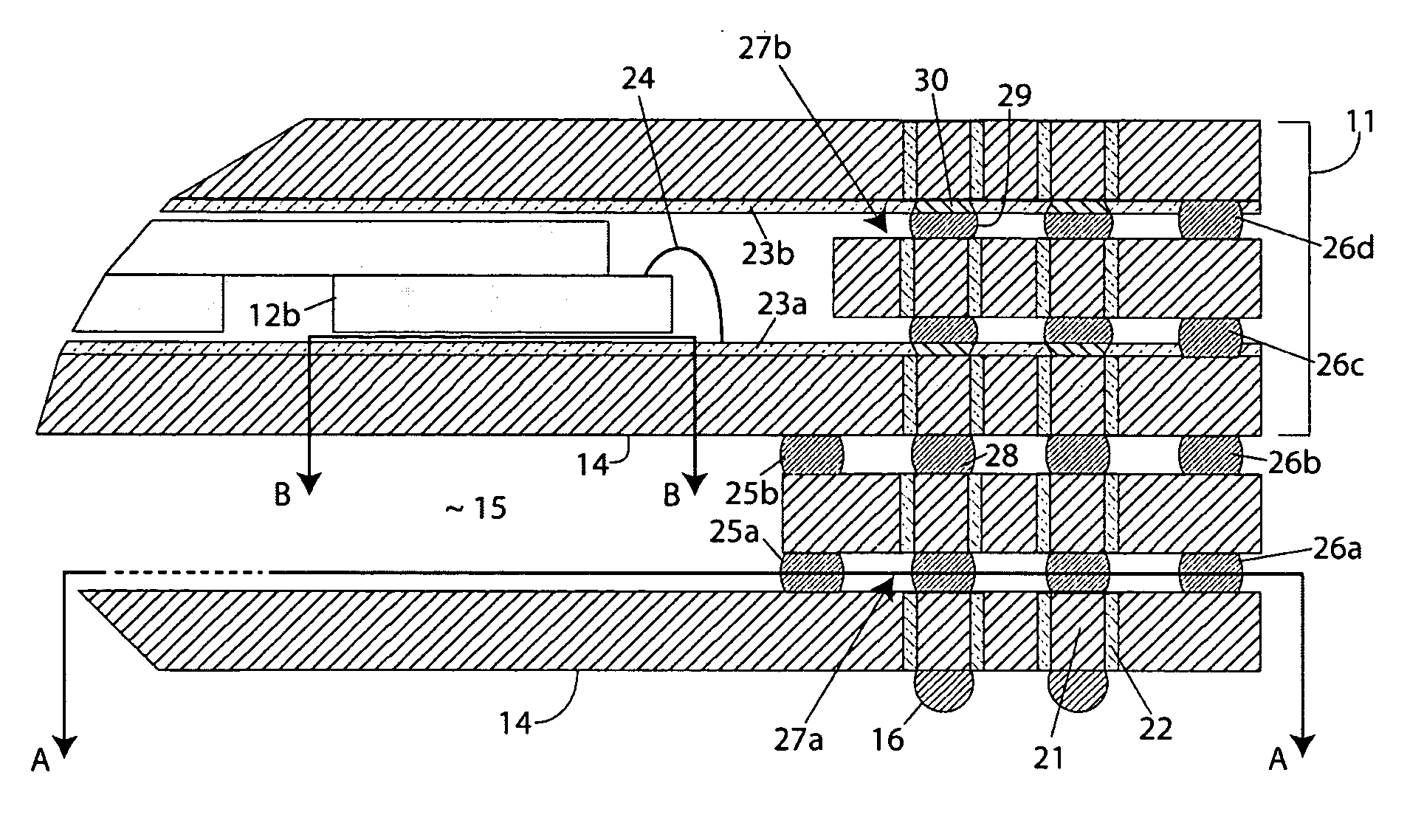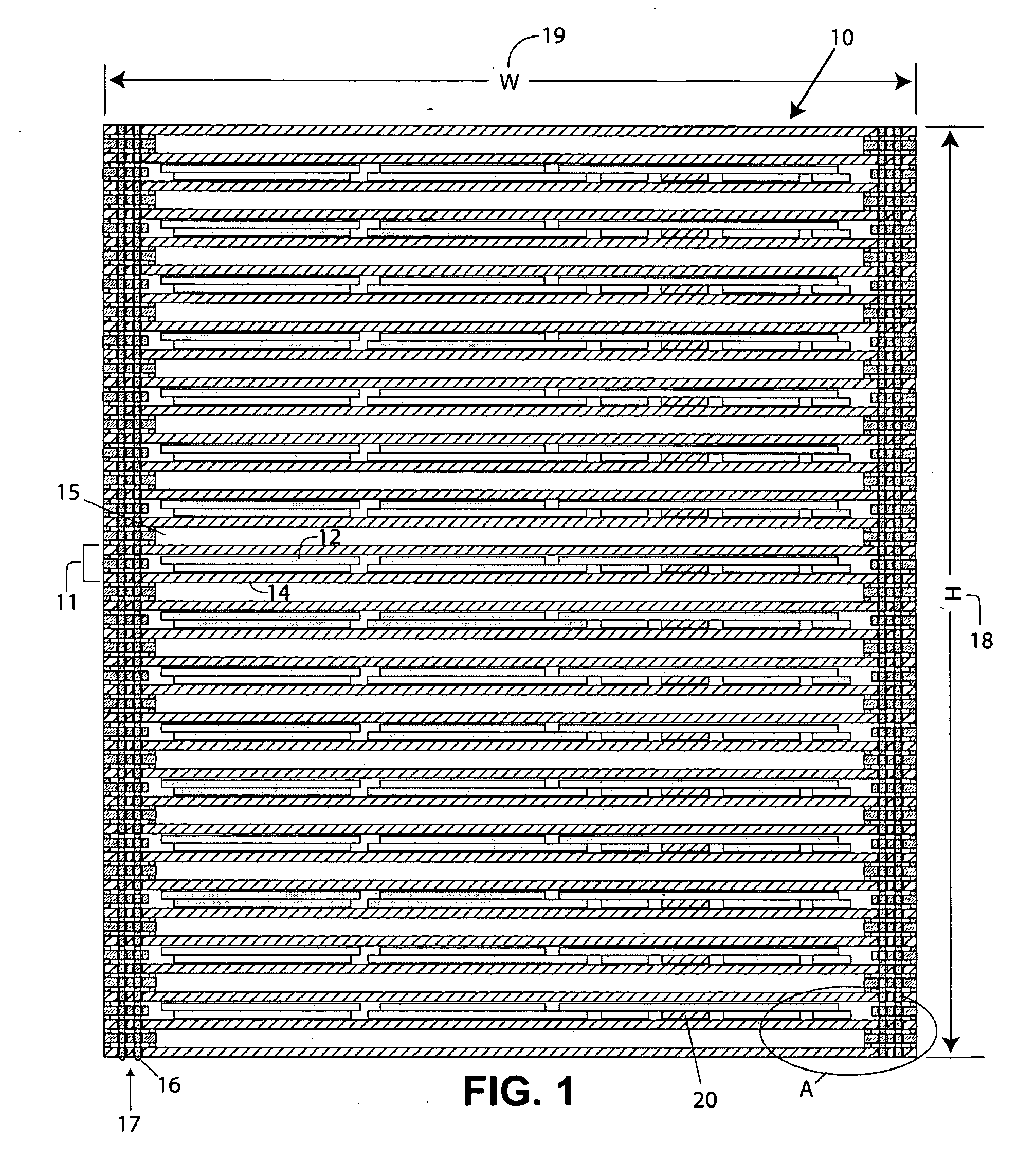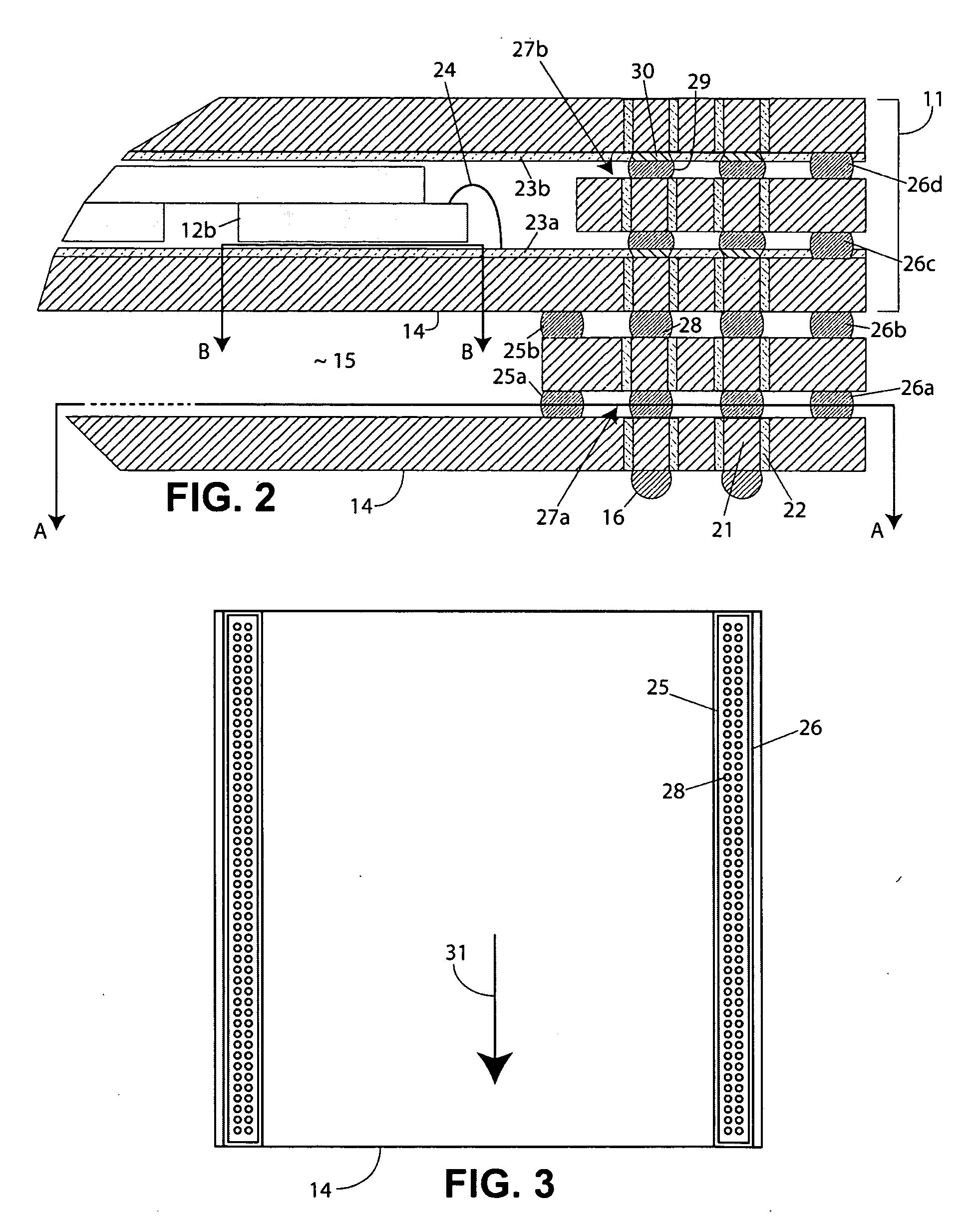Flip chip interface including a mixed array of heat bumps and signal bumps
a chip interface and signal bump technology, applied in the field of electrical connectors and heat connectors, can solve the problems of many packages not supporting speeds greater than 200 mpbs, affecting the cooling performance of chips, and affecting the performance of chips, so as to achieve the effect of increasing the density of cooling the chip
- Summary
- Abstract
- Description
- Claims
- Application Information
AI Technical Summary
Benefits of technology
Problems solved by technology
Method used
Image
Examples
Embodiment Construction
[0026] Various embodiments of the present invention are described hereinafter with reference to the figures. It should be noted that the figures are only intended to facilitate the description of specific embodiments of the invention. They are not intended as an exhaustive description of the invention or as a limitation on the scope of the invention. In addition, an aspect described in conjunction with a particular embodiment of the present invention is not necessarily limited to that embodiment and can be practiced in any other embodiments. For instance, the preferred embodiment describes cooling of the high power laser diodes in the electro-optic chip using heat bumps at the front face of the chip. However, additional cooling may be applied through the back face of the chip, using a thicker chip or a copper slug, as described relative to other circuit elements of the current invention.
[0027] A preferred embodiment of the current invention is a stacked system or subsystem employin...
PUM
 Login to View More
Login to View More Abstract
Description
Claims
Application Information
 Login to View More
Login to View More - R&D
- Intellectual Property
- Life Sciences
- Materials
- Tech Scout
- Unparalleled Data Quality
- Higher Quality Content
- 60% Fewer Hallucinations
Browse by: Latest US Patents, China's latest patents, Technical Efficacy Thesaurus, Application Domain, Technology Topic, Popular Technical Reports.
© 2025 PatSnap. All rights reserved.Legal|Privacy policy|Modern Slavery Act Transparency Statement|Sitemap|About US| Contact US: help@patsnap.com



